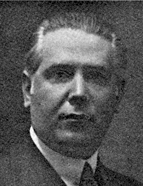

In 1919, rather than put himself forward for the exams for his degree, he accepted an invitation to the run the History of Art course at the Porto School of Fine Arts, for which he had been proposed by Joaquim de Vasconcelos, putting back for five years the examination of his academic credentials, which he concluded with a mark of nineteen (out of a possible twenty). Himself a conservative republican, in May of the same year he was elected to the Porto City Council, in the lists of the Partido Republicano Evolucionista, and was publicly reprimanded just days later by Leonardo Coimbra’s ministry for having objected to the contentious removal of the Faculty of Letters from Coimbra to the University of Porto. It was in this turbulent environment that, aged around 29, he published his work Templo das Siglas, originally a short study that appeared in the pages of Terra Portuguesa. A case study of the church of Nossa Senhora da Conceição de Ermida (Castro Daire), it took its place as one of the first national monographs dedicated to Romanic Art. Alongside a sharp defence of the safeguarding and restoration of Portuguese heritage, a cause to which Aarão de Lacerda had dedicated himself all his life in his works and his press columns, his writing revealed an author gifted with an objective analysis laid out with a rigorous and scientific vocabulary, fruit of a fine historiographical erudition and an examination of historical documents, valuable for a contextualization of works of art. Although this shows some influences of the Positivist current, in seeking a scientific model of objectivity that distanced itself from the usual subjective judgement of artistic criteria, we can also glimpse the aesthete whose appreciation of beauty and art is reflected in the fair and honest views regarding the context of their creation.
In 1921 he secured his entry into an academic university career running a subsidiary course in Aesthetics and History of Art. On receiving a double invitation from the Porto First Faculty of Letters and its congener at Coimbra, the latter opening caused by the death of his former mentor, Dr Teixeira de Carvalho, Aarão de Lacerda’s choice fell upon the former, where he joined the teaching staff and participated in a project of pedagogical reform, allowing him to continue to reside in the city of his birth. His erudition, his critical qualities and his pedagogical leanings were recognized by Leonardo Coimbra and Damião Peres at the time of his nomination. The following year he was charged with running a similar course at the Porto Municipal Conservatory of Music, while still maintaining at the Faculty of Letters the courses in Archaeology and General History of Civilization, for which he was awarded the honorary degree of Doctor in Historical Sciences in 1926.
